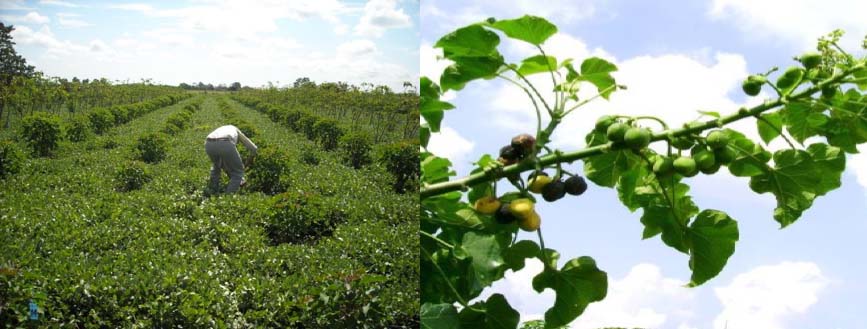Chemical properties of the oil of five genotypes of Jatropha curcas L., in Colombia
DOI:
https://doi.org/10.15517/am.v33i1.44555Keywords:
biofuel, cetane number, acidity, peroxide index, iodine index, calorific value, lipid profileAbstract
Introduction. Jatropha curcas L. (JC) is a multipurpose species with biological, pharmacological, and industrial applications. Its oil is recognized by the dominant composition of oleic-linoleic fatty acids that make it suitable as biofuel in internal combustion engines, without making major changes to the engine design. Objective. To identify in the oil of five JC genotypes in Colombia the cetane, peroxide, iodine, the acidity value, the calorific value indixes and to verify if they comply with standards for biodiesel production. Materials and methods. An experiment was carried out in Espinal, Colombia, in a randomized complete block design with five treatments and three repetitions. The treatments consisted of five JC genotypes. The fruit from the fifth harvest in 2015 was used. Five fatty acids (oleic, linoleic, linolenic, palmitic, and stearic) and five chemical properties (cetane index, acidity, peroxide, iodine, and calorific value) were determined from the oil. Results. The oil from the five JC genotypes evaluated in Colombia presented a lipid profile with a predominance of monounsaturated (oleic C18: 1) and polyunsaturated (linoleic C18: 2) fatty acids. The JC genotypes evaluated in Colombia presented a low cetane, peroxide, and iodine indexes, low acidity, and high calorific value. Conclusions. The properties of cetane and iodine indexes, of the genotypes evaluated complied with the specifications of the American Society for Testing and Materials (ASTM) and the European Norm for biofuel production, so they are classified as appropriate raw material for biofuel production.
Downloads

Downloads
Additional Files
Published
How to Cite
Issue
Section
License
1. Proposed policy for open access journals
Authors who publish in this journal accept the following conditions:
a. Authors retain the copyright and assign to the journal the right to the first publication, with the work registered under the attribution, non-commercial and no-derivative license from Creative Commons, which allows third parties to use what has been published as long as they mention the authorship of the work and upon first publication in this journal, the work may not be used for commercial purposes and the publications may not be used to remix, transform or create another work.
b. Authors may enter into additional independent contractual arrangements for the non-exclusive distribution of the version of the article published in this journal (e.g., including it in an institutional repository or publishing it in a book) provided that they clearly indicate that the work was first published in this journal.
c. Authors are permitted and encouraged to publish their work on the Internet (e.g. on institutional or personal pages) before and during the review and publication process, as it may lead to productive exchanges and faster and wider dissemination of published work (see The Effect of Open Access).



























